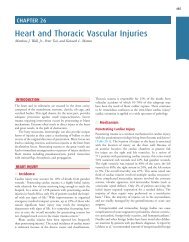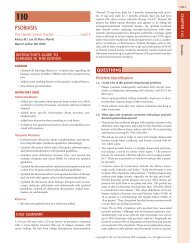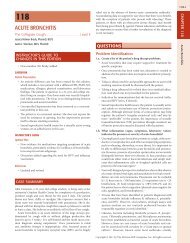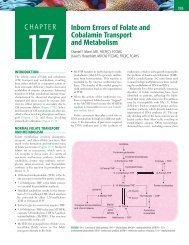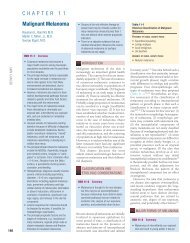Six Sigma Software Quality Improvement
Six Sigma Software Quality Improvement
Six Sigma Software Quality Improvement
You also want an ePaper? Increase the reach of your titles
YUMPU automatically turns print PDFs into web optimized ePapers that Google loves.
Executive Overview of <strong>Six</strong> <strong>Sigma</strong> | 15<br />
of poor quality as a percentage of sales between 15 and 30 percent (for a company operating<br />
at four sigma or s <strong>Sigma</strong> level) (see Table 1.1), and given the fact that consequences of many<br />
quality failures such as customer dissatisfaction and loss of market share cannot be<br />
quantified, the opportunity lost for a company that does not invest in <strong>Six</strong> <strong>Sigma</strong> is staggering.<br />
5. Invest in training<br />
Companies that have effectively implemented <strong>Six</strong> <strong>Sigma</strong> have made significant investments<br />
in training and made a concerted effort to do it right. This means not cramming scores of<br />
employees in <strong>Six</strong> <strong>Sigma</strong> training classes to hit some target goal of percentage of employees<br />
trained in <strong>Six</strong> <strong>Sigma</strong>. Instead, begin with carefully identifying who needs to be trained and<br />
provide them with the right training, with adequate rigor and ongoing support of MBBs<br />
so they are well equipped to successfully execute <strong>Six</strong> <strong>Sigma</strong> projects.<br />
12,13, 14,15<br />
Best practices with respect to <strong>Six</strong> <strong>Sigma</strong> training include but are not limited to:<br />
▲ The training program should be a good combination of theoretical instruction and<br />
practical application using real-life examples relevant to the students’ daily jobs.<br />
▲ Do not focus just on statistical tools, but ensure the training content adequately covers<br />
customer orientation, project management, organizational change management, and<br />
behavioral techniques that are so vital to effect change in an organization.<br />
▲ Ensure the instructors are <strong>Six</strong> <strong>Sigma</strong> experts with excellent communication skills.<br />
▲ Customize the training material to your company and its needs, especially the<br />
examples. This may require changing and enhancing the standard training material.<br />
▲ Spread the <strong>Six</strong> <strong>Sigma</strong> training program and make it hands-on to allow the students to take<br />
a real problem from their daily jobs and apply <strong>Six</strong> <strong>Sigma</strong> techniques to solve the problem.<br />
▲ Instead of overwhelming all BBs and GBs with training on advanced statistical tools,<br />
ensure that the MBBs can help them with the use of those tools when necessary.<br />
6. Value results<br />
It is important that the <strong>Six</strong> <strong>Sigma</strong> program be monitored with the right metrics. Right<br />
metrics are those that value results, that is, that show meaningful financial and operational<br />
benefit (refer to the success stories later in this book for several examples). Metrics are<br />
meaningless if they tout the number of employees trained on <strong>Six</strong> <strong>Sigma</strong> or the number of<br />
completed <strong>Six</strong> <strong>Sigma</strong> projects without an indication of quantified results. Metrics need to<br />
show which measures and objectives on the senior leadership’s dashboard have been<br />
favorably affected by <strong>Six</strong> <strong>Sigma</strong> projects (see item 10: Select projects that matter).<br />
7. Recognize and quantify all financial benefits<br />
Closely related to valuing results is quantifying all financial benefits as best as you can. If<br />
you are going to gain management attention and retain the management commitment<br />
that helped launch your <strong>Six</strong> <strong>Sigma</strong> program, you need to demonstrate that <strong>Six</strong> <strong>Sigma</strong> is<br />
helping to move the needle on financial measures. For this, you need to quantify not just<br />
the operational benefit (such as reduction in percentage defectives or improvement in<br />
cycle time), but also translate the improvement in currency terms and categorize it as cost<br />
savings, cost avoidance, or revenue gain.



